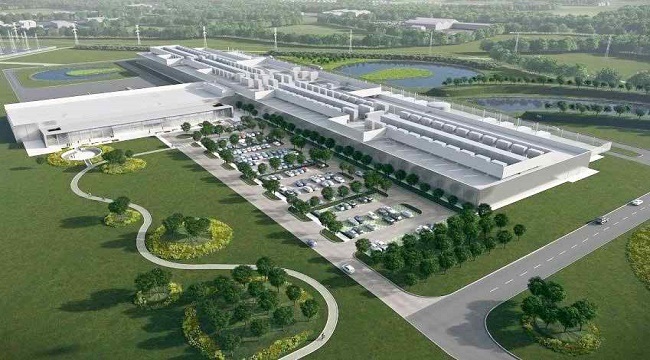How your Facebook Likes contribute to global warming

“Solving the clean energy problem is an essential part of building a better world. We won’t be able to make meaningful progress on other challenges — like educating or connecting the world — without secure energy and a stable climate. Yet progress towards a sustainable energy system is too slow, and the current system doesn’t encourage the kind of innovation that will get us there faster.” (Marc Zuckerberg, 2015)
Social networking as massive data factory
Every like, every comment, every picture and every video upload on Facebook requires electricity. While the activity of an individual Facebook user might be limited, the 1.71 billion monthly active users have a massive impact on the world-wide energy consumption. Users generate 4 million likes per minute, upload 350 million photos per day, and watch 100 million hours of videos per day, resulting in a daily data generation of 4 petabytes [1].
But how do these activities actually consume electricity? What is their impact on the climate?
The carbon footprint of data
Technology-driven companies such as Facebook, Google, and Amazon store all their data in large data centers around the world. A data center is a facility where enterprise servers, storage and networking technology are centrally accommodated, operated and managed [2]. With the growth of the industry, around 8.6 million data centers on an area of 1.94 billion square feet will be running in 2018 [3].

There are mainly 3 sources of energy consumption in the centers: running servers and equipment, securing data and location, and cooling the facility. Especially the latter one requires large amounts of energy to cope with the heat produced by the technology. In 2015, data centers consumed about 416 terawatt hours of electricity (i.e., 3 % of the global supply) and accounted for about 2 % of total greenhouse gas emissions. An amount that is greater than the UK’s total consumption (i.e., 300 terawatt hours), resulting in a carbon footprint comparable to the airline industry [5].
With the global trend, also Facebook’s energy consumption increased significantly over the last 5 years; by 146 % between 2011 and 2015 (see exhibit 1).
![Exhibit 1: Facebooks growth in energy consumption 2011-2015 [6]](https://d3.harvard.edu/platform-rctom/wp-content/uploads/sites/4/2016/11/statistic_id580087_facebooks-use-of-energy-2011-2015.png)
Facebook’s efforts to reduce energy consumption of data centers
As the foundation of all efforts for energy reduction, Facebook was required to create visibility over the consumption. In 2012, as one of the first organizations, they shared numbers on emissions which were usually kept secretly for competitive reasons. However, it helped them to identify reduction potentials, send a positive message to investors and improve their brand image [8].
A more operative decision was already made in 2010: they announced to build their own data centers and resign from their previous practice of leasing space from third-party providers. Thereby, they could on the hand reduce cost and on the other hand fully control the activities in the centers, including measures for energy reduction. In the following years, Facebook built high-tech facilities across the globe, for example in Prineville (Oregon), Forest City (North Carolina) and Lulea (Sweden) [9]. Begin of 2016 they announced to build a €200m green data center in Clonee, Ireland [10]. By locating the centers in cool climate areas, they are able to use fresh air from outside rather than operating chillers. Furthermore, the locations always offered reliably electricity supply, which helped to reduce internal backup mechanisms [9].
In order to further reduce the impact of data centers on the climate, Facebook started to rely more and more on clean renewable energy. Exhibit 2 shows that already in 2015 the majority (i.e., 35 %) of their energy consumption was covered by non-fossil and non-nuclear sources.
Exhibit 2: Facebook’s sources of electricity in 2015 [11]
Future paths towards cleaner energy
Just recently, technology giants such as Facebook, Google, Amazon and Microsoft joined the Renewable Energy Buyers Alliance (REBA) consisting of overall 60 US corporations. The first goal of the alliance is to create commitment among its members to solely use renewable energy for their operations in the future. Secondly, they aim to actually build the renewable power capacity by establishing solar and wind energy farms to add 60 gigawatts to the US grid by 2025 [12].
Solving global warming is not the responsibility of a single organization or country. However, acting as a pioneer and example is the cornerstone for great initiatives and collaborations like REBA.
[784 words]
Sources
[1] https://www.brandwatch.com/blog/47-facebook-statistics-2016
[2] http://www.cio.com/article/2425545/data-center/data-center-definition-and-solutions.html
[6] https://www-statista-com.ezp-prod1.hul.harvard.edu/statistics/580087/energy-use-of-facebook
[7] https://energy.stanford.edu/news/data-centers-can-slash-co2-emissions-88-or-more
[8] https://gigaom.com/2012/08/01/facebook-unveils-energy-use-carbon-emissions-data
[9] http://www.datacenterknowledge.com/the-facebook-data-center-faq
[10] http://www.businessgreen.com/bg/news/2443145/facebook-boots-up-eur200m-green-data-centre-in-ireland



![Exhibit 2: Facebooks growth in energy consumption 2011-2015 [11]](https://d3.harvard.edu/platform-rctom/wp-content/uploads/sites/4/2016/11/statistic_id580113_facebooks-energy-consumption-mix-by-resource-2015.png)
Thanks for this Fabian.
One interesting example of the impact Facebook has had by building its own datacenters is its ‘Cold Storage’ innovation (https://code.facebook.com/posts/1433093613662262/-under-the-hood-facebook-s-cold-storage-system-/)
Under this system the company significantly improves the efficiency with which it is able to store media that is accessed less frequently (e.g. pictures we uploaded many years ago). Rather than having many replications of this data on live servers using power, Facebook developed ‘cold storage’ facilities that are powered up infrequently when needed to access data (e.g. due to disk failures elsewhere). The result is a significant reduction in energy usage without compromising how accessible a user’s data is.
Internet companies are interesting to consider from a climate change perspective. I agree with the points you’ve laid out around improvements to data centers, but think there are other places Facebook could look when addressing its environmental impacts. Google’s efforts could be a useful template – beyond increasing the efficiency of their data centers, the company recycles all the electronic equipment that leaves them. It also considers the environment in the construction and maintenance of its campus – through commuter programs, sustainable food service, and waste control. I’m not sure if Facebook has implemented similar initiatives, but perhaps they could consider it if not.
https://www.google.com/green/efficiency/
Great article! I agree that Facebook is not just implementing environment-friendly changes in the day-to-day operations, but pioneering healthy practice among other companies, beyond tech industry. For instance, they shared designs of their data centre with other companies to help spreading the most efficient ways of running data storages. This initiative (called OCP – stands for Open Compute Project) is now used by many other companies, among which are Apple, Microsoft and Goldman Sachs. Facebook goes extra mile in the transparency of communication with other industries on the mutually important topics, such as environment, serving as a great example for future knowledge and efficiency exchange.
Interesting post Fabian! It is impressive the extend to which Facebook has gone in order to reduce their carbon footprint. I would agree that there are other fronts where they can implement sustainable practices and a few others have brought them up already. I think my main question after reading your posts is what are the drawbacks from this initiative of moving their data centres to different locations? Are there any operational or economic challenges that you could identify?
Nice job, Fabian! It was very interesting to hear that the level of activity on Facebook contributes to the negative effects of climate change. You mentioned that Facebook has to create visibility over the consumption of electricity. Is this visibility to simply the government, or publicly to everyone? I agree that Facebook and other technological giants should do a better job disclosing this information, but I think it goes directly against what these tech giants want their consumers to do. Also, I question if we would see a decrease in social media/internet activity if we as consumers knew were were contributing to climate change.
Great post Fabian! I hadn’t considered the environmental impact of Facebook earlier due to the massive data centers. It was interesting to hear that one of their main initiatives was to locate data centers in naturally cool environments to save on operating chillers but I wonder that with global warming, how much longer will that remain the case? And since these data centers are such large capital investments, it isn’t really possible to move them to cooler areas when the temperatures increase. I also thought amals raised a great point that it would be interesting to hear about what sustainability efforts Facebook has implemented in its offices.